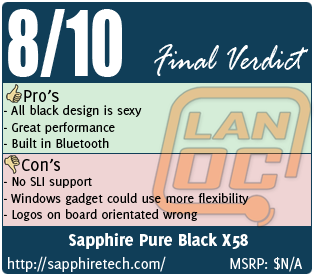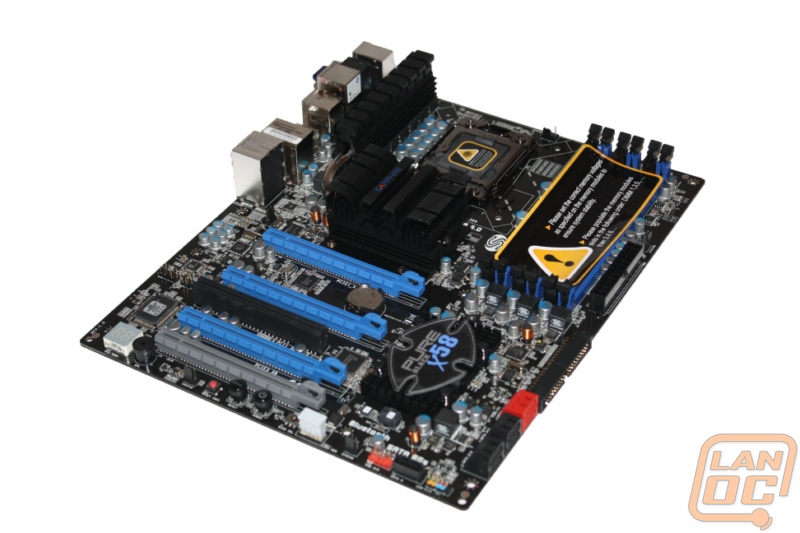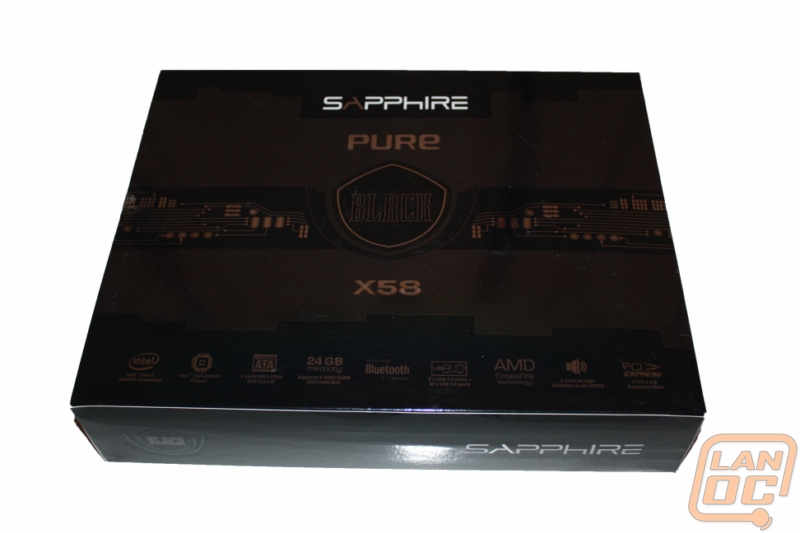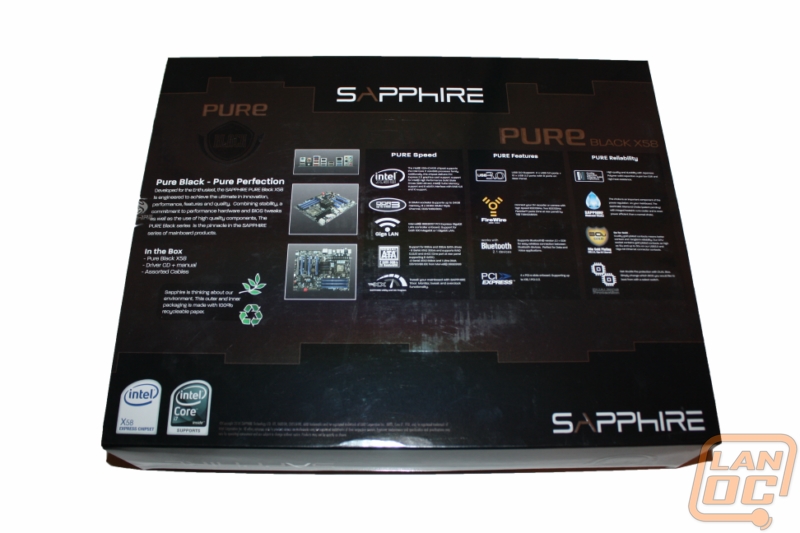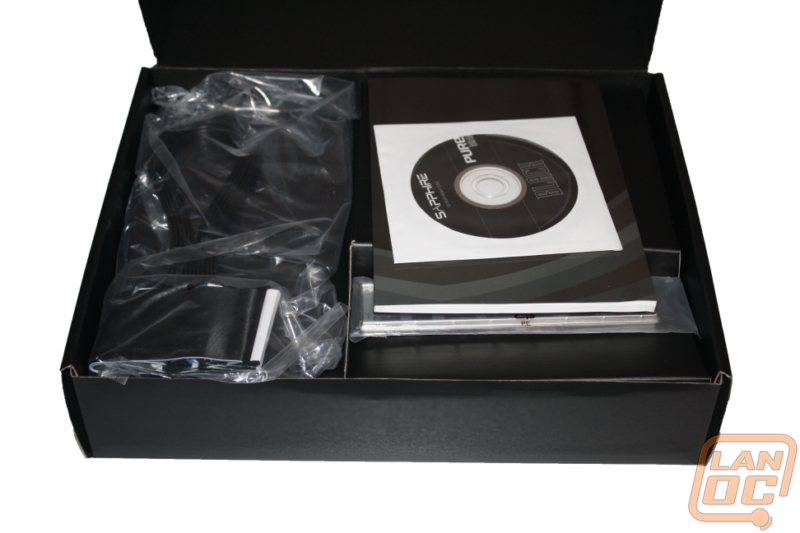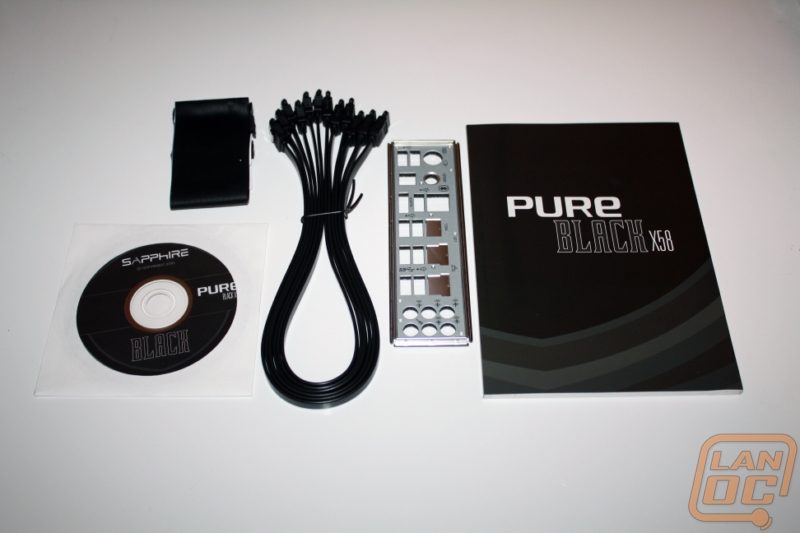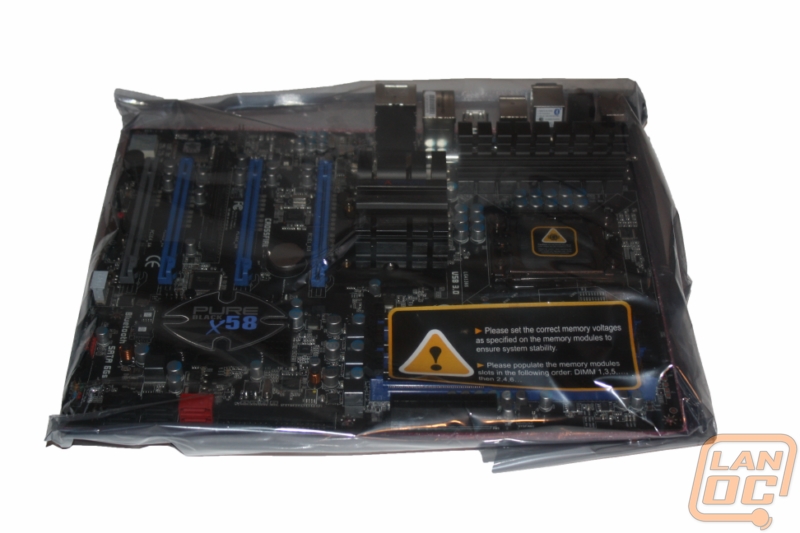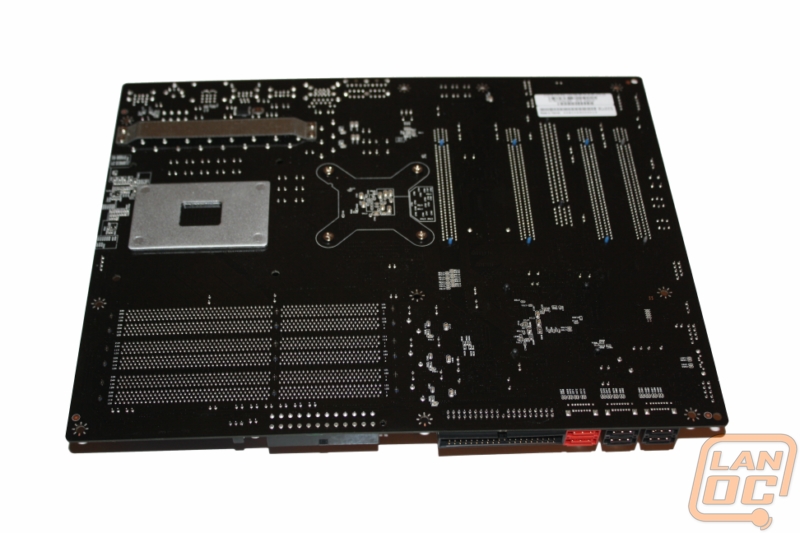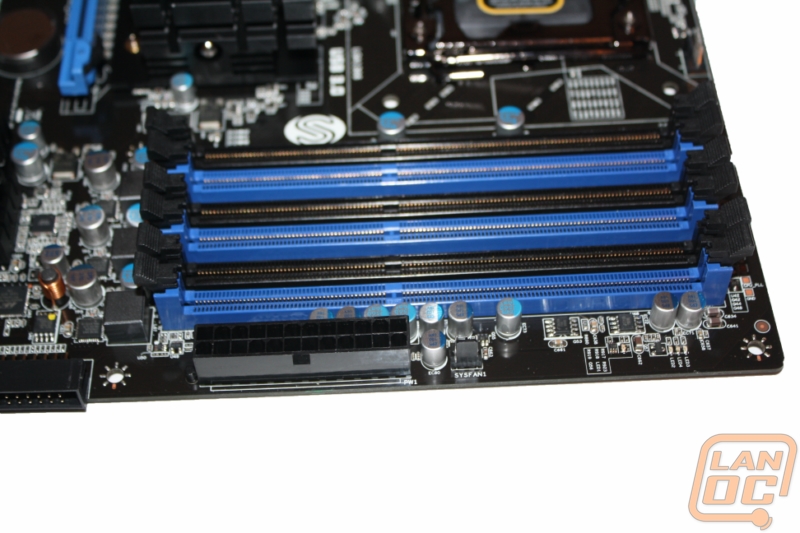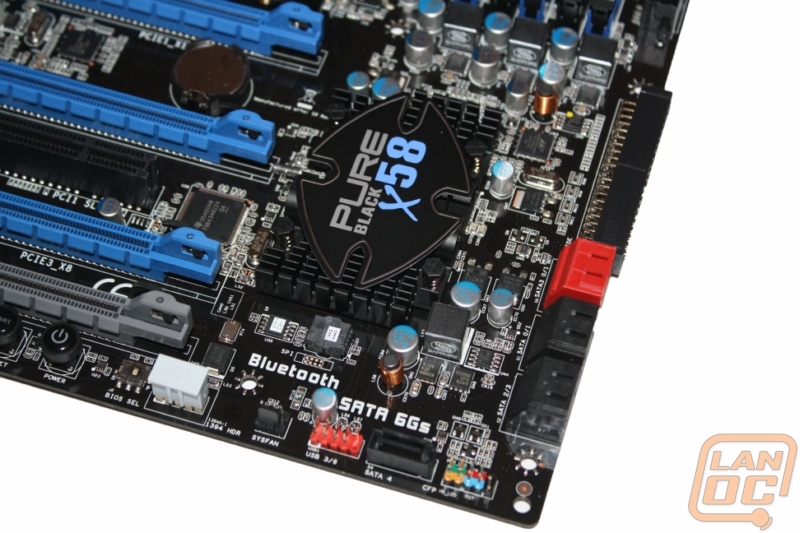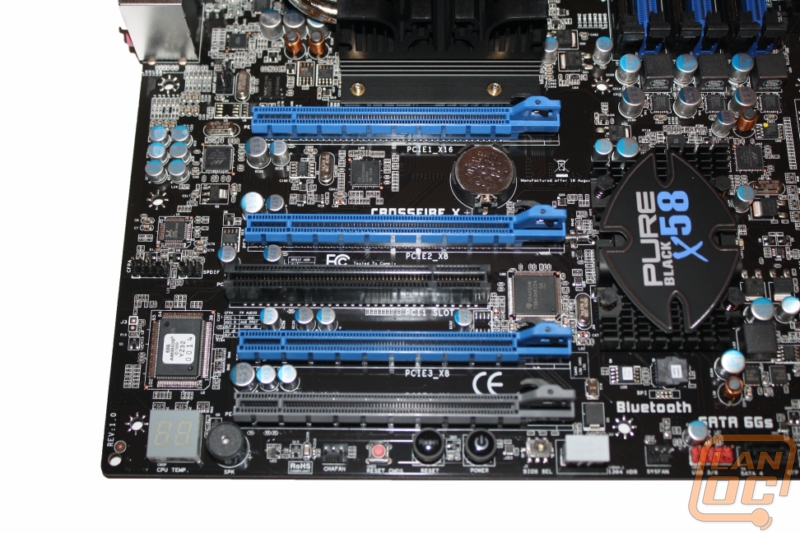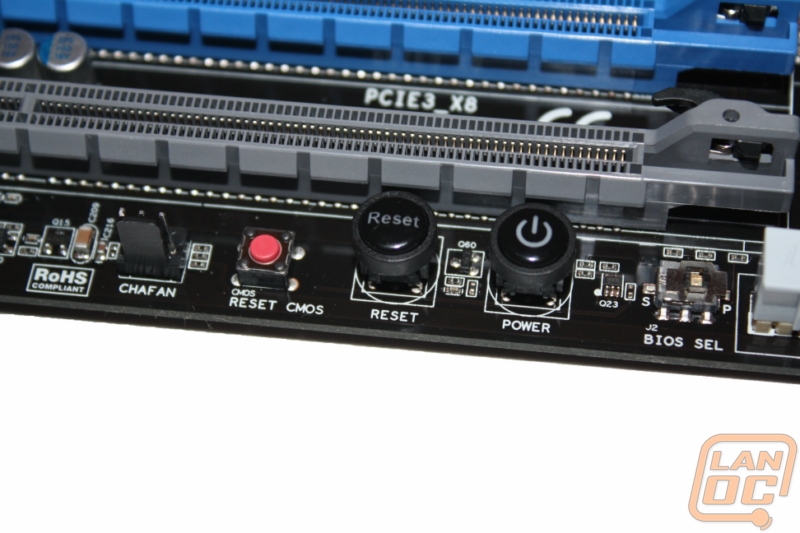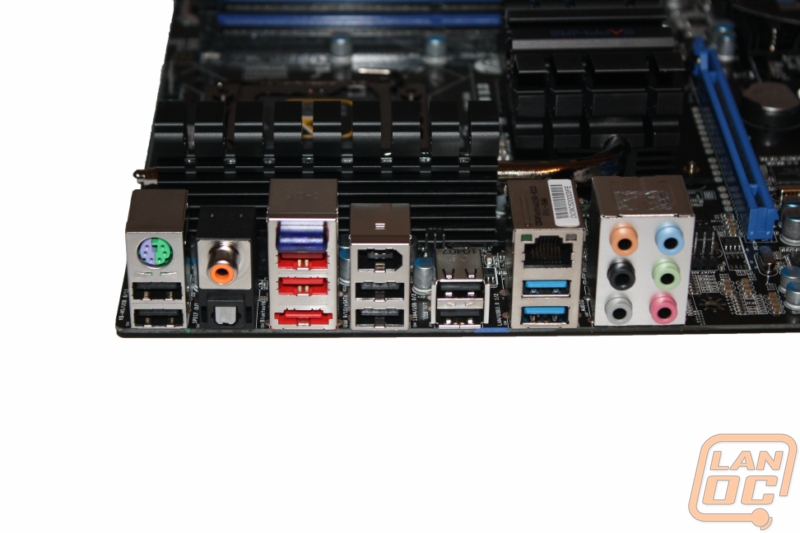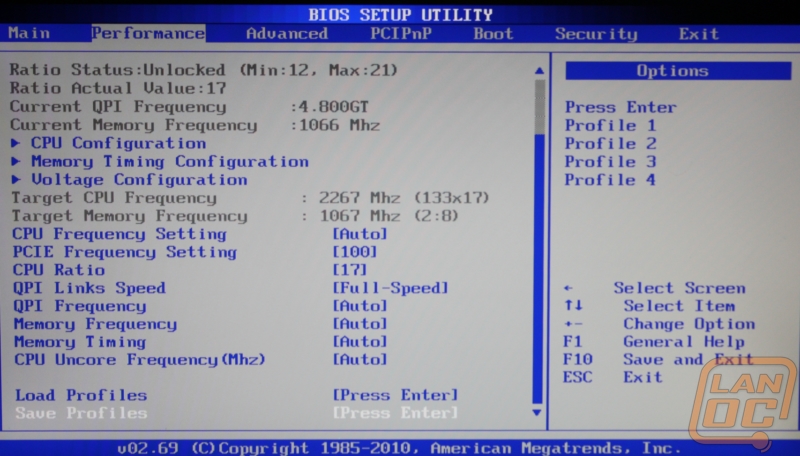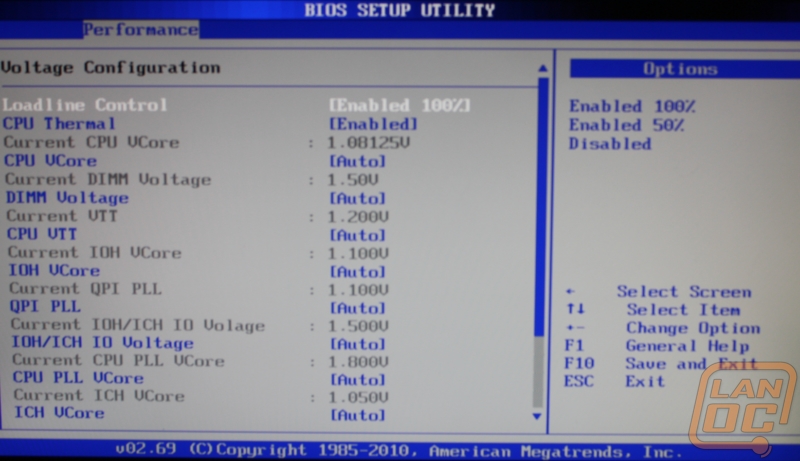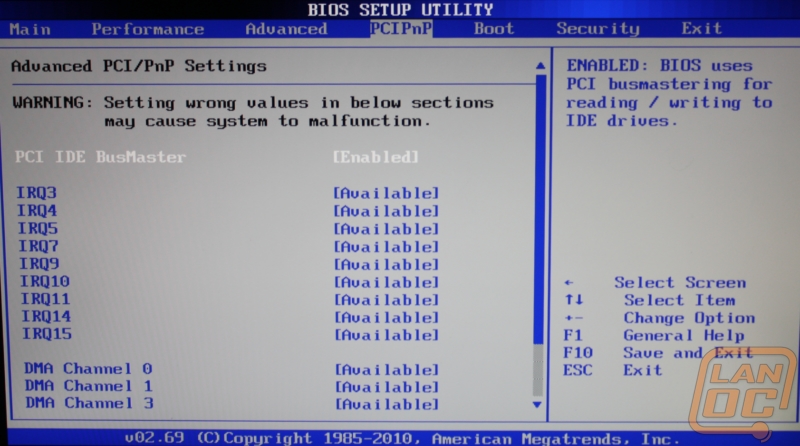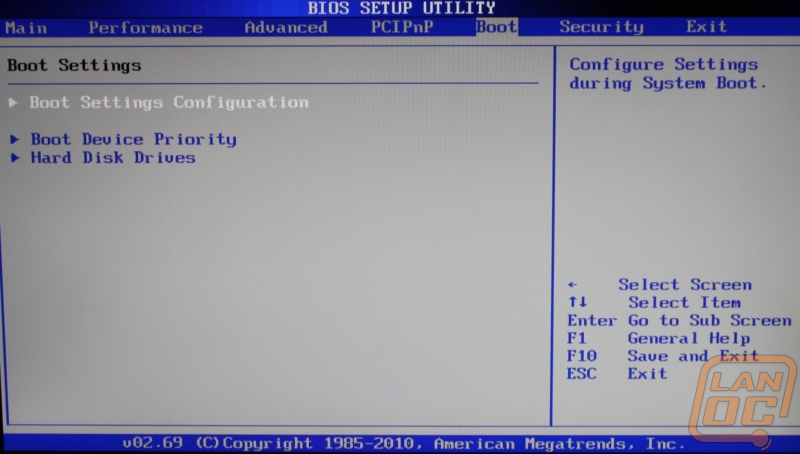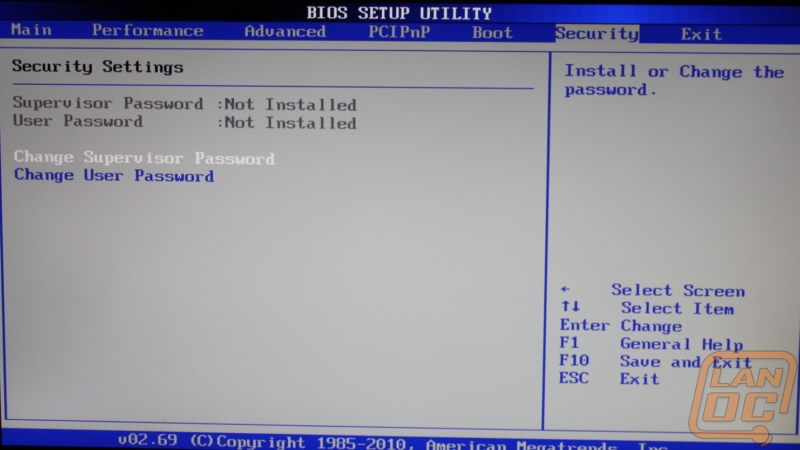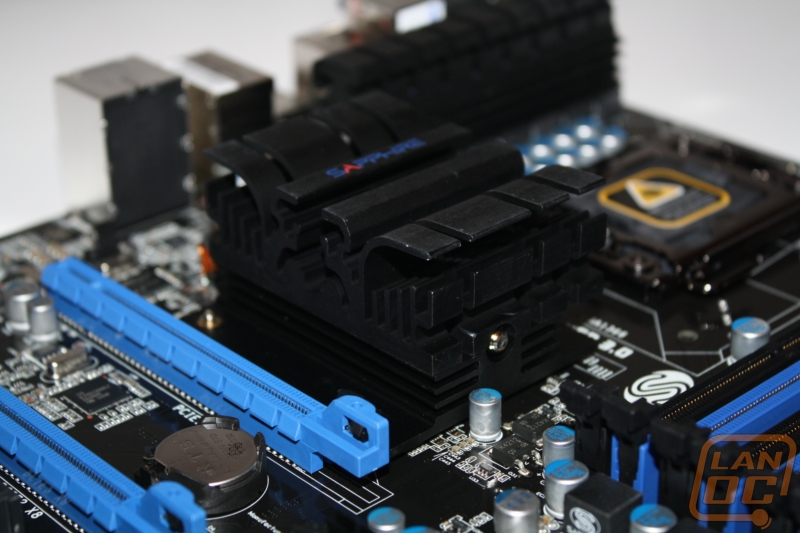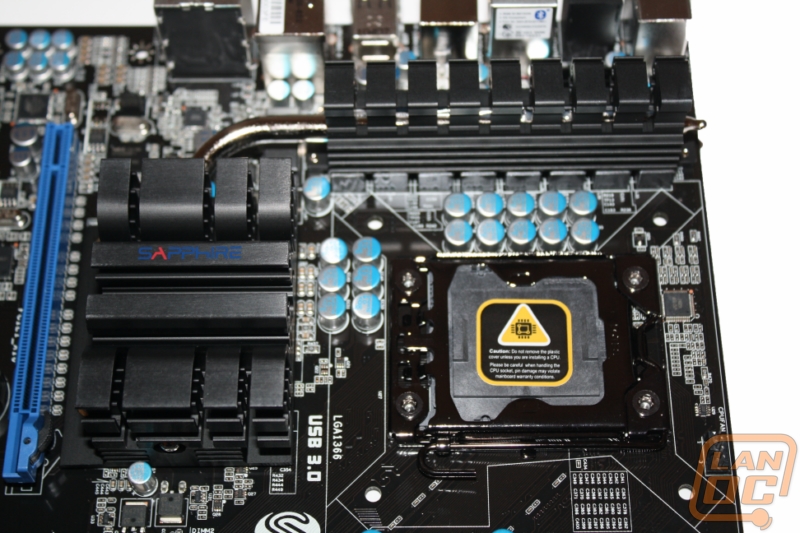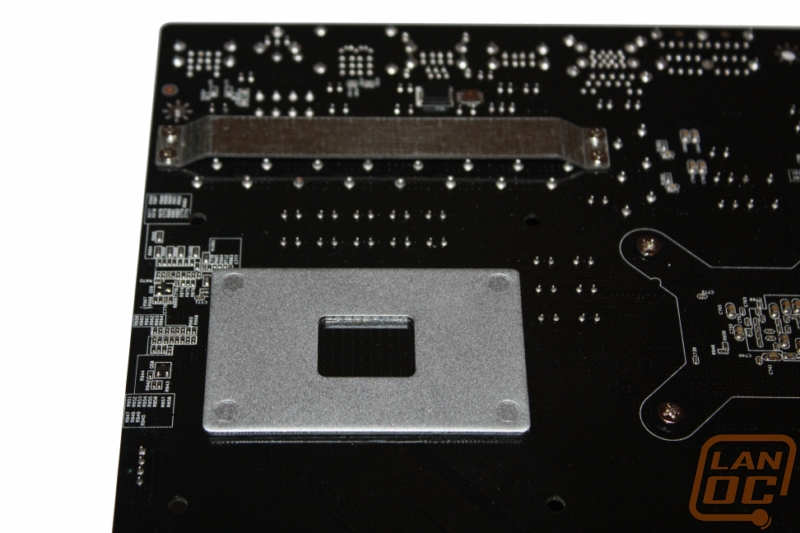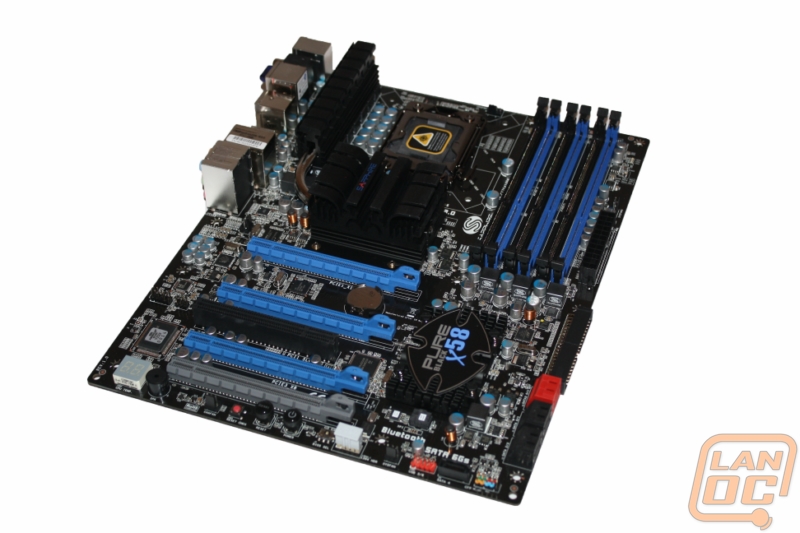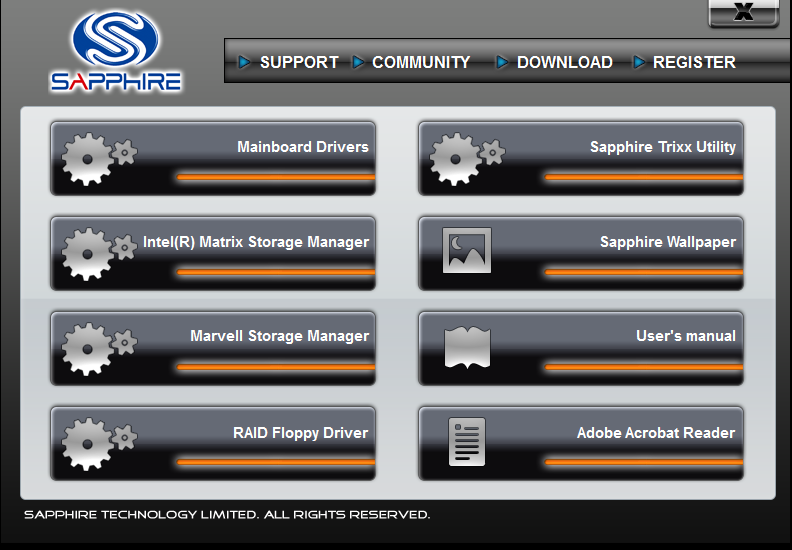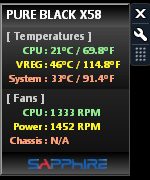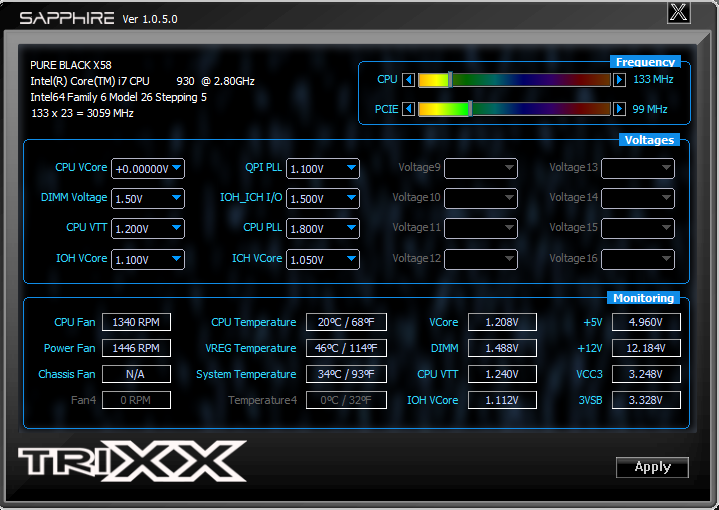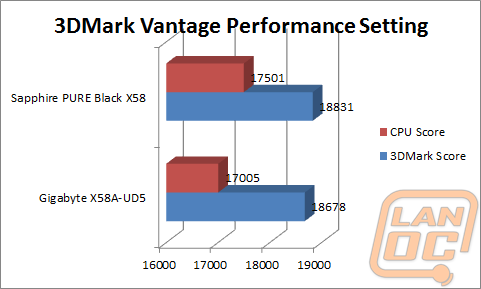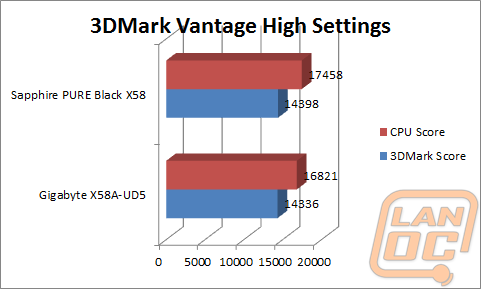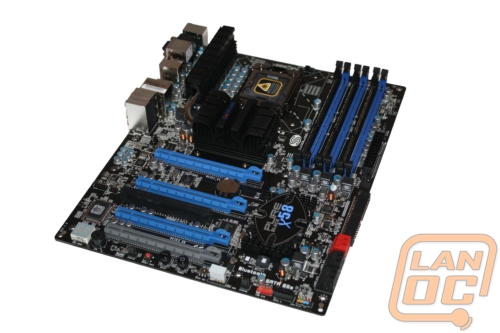
Product Name: Sapphire Pure Black X58
Review Sample Provided by: Sapphire
Review by: Wes
Pictures by: Wes
Specifications
|
CPU |
Supports Intel LGA1366: Intel Core i7 Series processors |
|
Chipset |
Intel® X58 Express Chipset + ICH10R Chipset |
|
Memory |
6 slots 240-pin DDR3 800/1066/1333/1600+ non-ECC ,un-buffered memory |
|
Expansion Slots |
3 x PCI Express 2.0 x16 slots |
|
Storage |
5 x Serial ATA III 6Gb/s connectors |
|
Audio |
Realtek ALC892 HD Audio CODEC with 8-Channel |
|
Ethernet LAN |
Marvell 88E8057 PCI-Express Gigabit LAN |
|
Rear Panel I / O |
8 x USB 2.0 port |
|
Internal I / O |
1 x USB 2.0 headers |
|
Special Features |
Voltage measure PAD |
|
Form Factor |
ATX, Size 12" x 9.6" |
|
OS support |
Windows Vista (32/64) bit |
Features
PURE Speed
Intel X58 Chipset
DDR3 - 6 DIMM sockets up to 24Gb
Giga LAN – Marvell 88E8057 PCI Express Gigabyte LAN controller onboard support for both 100 Megabit and 1 Gigabit LAN
SATA 6GB/s – Support for 6Gb/s and 3Gb/s SATA drives, 6 SATA 2 ports and 2 SATA 3 ports. Support for RAID 0,1,5,10 and AHCI
Trixx – Tweak your mainboard with Sapphire Trixx. Monitor, tweak, and overclock functionality.
PURE Features
USB 3.0 -2x USB 3.0 ports + 10x USB 2.0 ports with 8 ports on the Rear Panel
Firewire – Two IEE1394a FireWire ports (one at rear panel)
Bluetooth – Supports Bluetooth version 2.1 + EDR
PCI Express- 4x PCI-e slots onboard Supporting up to x16, 1 PCI 2.3
PURE Reliability
Capacitors – High quality and durability with Japanese Polymer solid capacitors super low ESR and high heat resistance.
Sapphire Diamond Choke – The Sapphire Diamond Choke (patent pending) with integral heatsinks runs cooler and is more power efficient than a normal choke.
30u Gold Plating – Quality gold plated contact means better contact and long term reliability. Our CPU socket contains gold plated contacts as high as 15u and up to 30u on our USB 3.0 and Giga-bit Ethernet connector contacts.
DualBios Protection – Get double the protection with DUAL Bios. Simple change which BIOS you would like to boot from with a select switch.
Packaging
With their reintroduction into the motherboard market Sapphire went all out. The Pure Black comes in a reflective black and grey box with a sharp circuit design on the front leading to the black logo. Along the bottom of the front of the packaging you will find a whole collection of logos showing off the boards features, a few notable icons would be the USB 3.0, Bluetooth and, SATA 6Gb/s logos.
Around back there are a couple photos of the board and its layout along with a photo of the back I/O panel. The boards features were broken down into three categories (PURE speed, PURE Features, and PURE Reliability), each showing off the boards features. You can find a similar list in the features section earlier in this review.
Inside everything is packaged in a second box typical of a motherboard. What wasn’t typical was the box’s black color. It may only be a small detail but rather than go with the norm they stuck with the PURE black theme. When you open it up you are greeted by the manual, software, I/O panel, and a bag with the rest of the board’s accessories (Six black SATA cables and one IDA cable).
Board Layout
The PURE Black X58 is fairly standard in its overall layout; none of the main components like the ram or cooling are positioned differently than a standard X58 board. The LGA 1366 socket is surrounded by all black heatsinks that I will go into more detail about in the cooling section. Like a few other boards recently the entire PCB is a black color, this isn’t a shock considering the PURE Black name but it obviously needs mentioned.
Just to the right of the CPU socket there are 6 DDR3 ram slots color coded in blue and black, each using a black locking mechanism. Even the slot closest to the CPU should have room for even the tallest ram using a standard sized or larger aftermarket heatsink. The 24 pin connection can be found directly next to the Ram slots, also in a black color.
Below the ram you will find a right angle IDE connection along with six right angle SATA connections, two of those are SATA 3. In the bottom right corner of the board there is a brightly colored front panel header that is both easy to read and VERY easy to reach, even in small cases. Next to it is a 7th SATA connection; this time around it is not right angled. Next to the SATA connection is the board’s only internal USB connection, this in my opinion is the first noticeable flaw with this board. With only one USB connection internally you won’t even be able to hook up to cases with four front panel USB plugs or hook up drive bay card readers. In this section you will also find one of the board’s 5 fan headers (The others are located, next to the CPU, above the 24 pin, and two are behind the rear I/O panel). Lastly they have given you a firewire header in case you need it but have put a plug over it to prevent you from mistakenly hooking up a USB connection. I would have much rather seen this be a second USB header but that is mostly because I have never had a use for an internal firewire port other than hooking up the front panel.
There are four PCI full size PCI express slots; three are a blue color with the fourth being grey. This odd combination gave me cause to take a closer look only to find out that the top slot is a full x16, the two other blue slots are x8, and the last grey colored slot is a lowly x4. This means that you can run triple crossfire but two of your cards will be limited to x8. The second option means you can use the last slot for less demanding things like a sound card or maybe a USB card ;). Oddly enough the extra full size slot means you don’t have any x1 slots, but unless you are running three video cards you can use any of the full sixed slots as a x1. They also tucked a legacy PCI slot into the middle in case you have an old card you still need to run, that is as long as you don’t have a dual bay card in that second slot. The audio header is also located right next to that PCI slot and unfortunately you may have trouble routing its cable cleanly when you have a couple cards installed, it would be nice to see this header down at the bottom. In that location is the speaker along with a diagnostic LED panel that also doubles to show you the CPU temperature, a nice little addition.
Below that grey PCI express slot you will also find the Dual BIOS selection switch, a CMOS reset button, and the power and reset buttons.
The rear I/O panel includes a PS2 port for those of you still using a PS2 mouse or keyboard. For audio you will find the standard 6 audio ports along with both a digital and coaxial SPDIF OUT. One Firewire port is tucked along with one eSATA connection. You have a whole selection of USB ports with eight full USB ports along with two blue colored USB 3.0 connections. There is one gigabit Ethernet connection and lastly you will find a blue bubble sticking out as an antenna for the board’s built in Bluetooth.
BIOS
Sapphire took a different direction with the BIOS on the PURE Black X58 and went with an AMIBIOS from American Megatrends. When you boot up you are greeted by a System Overview, not a menu like we normally see. Up top there are seven options (Main, Performance, Advanced, PCIPnP, Boot, Security, and Exit). Most of the important goodies will be in the Performance tab but you may find yourself in the advanced and boot tabs to make a few changes.
Under the performance tab the Bclk and other options are right on the main page. You can also get to pages to adjust all of your voltages, memory timing, and CPU config options. Down at the bottom you will also find the ability to load and save overclocking profiles(4 in total). This layout is a drastic change from what we are used too and I found it a little difficult to move around at first. Once you find your way around you will find that everything you need is there, it’s just a little harder to find.
All of your boot configuration options are obviously under the boot tab, this makes it easy to select your boot devices, hard disk priority, and everything else you may need.
Cooling
After spending entirely too much time with the new H67 and P67 boards going back to an X58 board reminded me that all X58 boards have a large heatsink under the CPU socket to help keep the Northbridge cool. The PURE Black X58 is no different. Of course the heatsink is passive and is all black to go with the theme. It is also attached to a second heatsink by a heatpipe to help with cooling Sapphires Diamond Chokes (aka their power regulation). The Southbridge is under a low profile passive heatsink with a PURE Black X58 emblem on top of it. My only problem with the emblem and also with the Sapphire logo on the Northbridge is the orientation of the text. Each are facing the right side of the board, most cases will have the I/O panel on the left side making this text harder to read when installed. Unless of course if you installed this into a Silverstone FT02 or any other case that puts the I/O panel on the top of the case.
Our Test Rig
Intel i7 930 CPU
Patriot Sector 7 Ram Triple Channel
Seagate Constellation 2tb Hard drive
Corsair H50 Water Cooling
Sparkle Gold Class 750 Watt PSU
Sapphire HD6970 BF:BC2 Edition
http://www.highspeedpc.com/ Test Bench
Software
When setting up the PURE Black X58 Sapphire has made installing the drivers and software easy with the included disc. Currently this is the only place you can find drivers, I checked their website but didn’t see any drivers available at the time of our publishing (It is always best to run the most up to date version of drivers and software). When running the driver disc you are greeted by a menu letting you select between which drivers to install along with Sapphires Trixx Utility. They have also included wallpapers, the user’s manual, and Adobe Acrobat Reader in case you don’t have a copy to help read the drivers.
We have seen the Trixx Utility on the VGA side of things but this is our first experience with the Trixx motherboard utility. I was surprised that the software isn’t combined for both, if you are running a Sapphire video card you will have to run two different programs. I hope this is something that gets fixed in the future, it’s not a big deal but the devil is in the details. When running the Trixx utility I was greeted with a windows gadget on my screen, a small box that showed your temperatures and fan speeds for the entire system. This gadget as the potential to be a very useful utility, even more so if in the future it gains the ability to keep an eye on other things like clock speed, voltages, ect. Of course all of those options can be seen just by opening up the Trixx software itself. Everything is packed all on one page, no need for flipping through tabs or anything else on this software. You have the option to monitor and change most of your key voltages along with your CPU and PCIE frequencies. You also get up to date monitoring of your fan speeds and CPU, VREG, and System temperatures.
Performance
To put the PURE Black X58 to the test we went ahead and ran it through both our in game and synthetic benchmarks to get an idea of its performance. Of course we wouldn’t be able to see how well it stands unless we have something to compare it too so I have included our results from the same tests using our standard test bench with the Gigabyte X58A-UD5. Other than the motherboard swap the tests were done on identical setups using the same Sapphire HD6970 video card.
All of our in game performance testing was run at 1920x1080p, you can see the exact settings below.
Call Of Duty Black Ops (1920x1080 – high settings, first scene starting after the cut scene, recorded using fraps)
Battlefield Bad Company 2 (1920x1080 – high settings, first scene starting after the cut scene, recorded using fraps)
Dirt 2 (1920x1080 – 4x MSAA – high settings, in game benchmark)
Metro 2033 DX11 test (built in benchmark, 1920 x 1080; DirectX: DirectX 11; Quality: Very High; Antialiasing: MSAA 4X; Texture filtering: AF 4X; Advanced PhysX: Enabled; Tesselation: Enabled; DOF: Disabled)
Metro 2033 DX10 test (built in benchmark, 1920 x 1080; DirectX: DirectX 10; Quality: Very High; Antialiasing: MSAA 4X; Texture filtering: AF 4X; Advanced PhysX: Enabled; Tesselation: Enabled; DOF: Disabled)
Mafia 2 (built in benchmark, 1920x1080, PhysX on, high settings)
Paired up with the i7 930 and HD6970 the Sapphire PURE Black X58 can handle just about anything you throw out at it with the exception of Metro 2033 on its highest settings. When comparing the two boards we did see a nice jump in FPS in Metro but no real explanation for it. Beyond that the numbers are extremely close; we even saw the same results in our Dirt 2 benchmark. On the synthetic benchmark side of things we stuck with the Futuremark collection including multiple tests using 3DMark Vantage, 3DMark Vantage 2011, and PCMark Vantage. Here are the results.
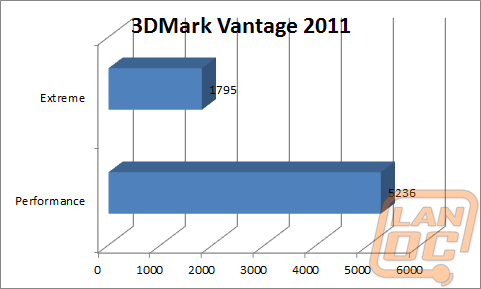
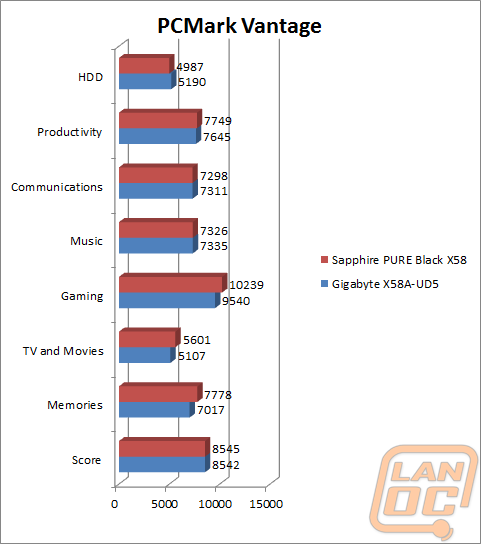

The synthetic results show the PURE Black X58 edging ahead in almost every test. The difference may not be large, but remember that other than the motherboard we are using the same test setup for each.
Overall
It’s clear just by looking at the PURE Black X58 that they aren’t messing around. This board has the style and feature set to run with the big dogs and I expect to see much more from Sapphire over the next few years. My complaints about the PURE Black X58 were limited to mostly small details like the orientation of the logos on the board and the features of the software. There is only one major thing missing from the PURE Black X58, SLI support. I would assume this has to do with Sapphires longtime support of AMD/ATI in the past, but this could be a limiting factor when selecting a board. At CES was did see the X67 variation had a Lucid HydraLogic chipset; I would love to see this on the X58 version.
